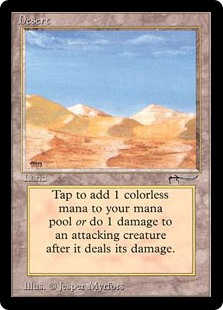The human mind is a remarkable thing. From ingenuity and innovation to creativity and artistic expression, our brains are unlike any other animal on the planet. Not only can we adapt to a wide range of environments, we’re capable of changing the environment itself to suit our needs. We can solve complicated problems and are one of only a handful of animals who are self-aware.
The human mind is indeed a highly complex system that has many traits to be admired, championed, and cherished.
But that doesn’t mean it’s perfect.
For one thing, we humans are pretty bad when it comes to memory. Are you able to recall exactly where you were doing six months ago? Do you remember the major news events of June? How about what you ate last Wednesday?
Heck, even in the heat of the moment when we know we should be highly focused on our surroundings, we have a tendency to get things wrong. Or to simply forget how things used to be.
Shockingly, this applies to Magic players as well. For example, most current Magic players simply take for granted how well integrated modern sets are. In the era of Ravnicas and Innistrads, Magic sets of today are well-oiled, highly-refined (sometimes too refined) systems, where every design aspect is parsed over and over and over again for its maximum desired effect. It’s not always perfect, sure, but there are many more things that sets do right nowadays than they do wrong. Most players simply have forgotten that sets didn’t always work the same way in the past.
Well, that or players are younger than the game itself – which is true for a not-insignificant amount of the player base.
Take creature types. Most don’t remember that, originally, creature types were designed solely for flavor purposes. Despite the inclusion of Lord of Atlantis, Goblin King, and Zombie Master in Alpha, it wasn’t until Fallen Empires – its fifth expansion – that tribal concepts were implemented in earnest during design.
That’s not to say that there weren’t earlier attempts. The Dark had a couple cards reference Goblins specifically, and Legends famously experimented with some proto-tribal by way of Kobolds. But it was Arabian Nights when we first saw cards reference other cards in the set other than basic lands or those of specific colors. And it involved a simple little card with a simple ability. It also happened to be the first common nonbasic land.
Today we have: Desert

Name: Desert
Edition: Arabian Nights / Time Spiral Timeshifted / FTV: Realms
Rarity: Several
Focus: Combat Damage
Highlights: Deserts have gotten a lot of attention in recent sets for obvious dragon-related reasons, but sadly the very first Desert was not included in the fun. Luckily, though, it has been reprinted twice since its debut back in the early 90s, and its Time Spiral printing specifically made the card once again accessible to a wide audience of players.
Its corresponding sister cards Camel and Desert Nomads on the other hand have (albeit understandably) not been as lucky.
Yet a good chunk of the Magic audience tends to eschew this sandy little option.
Desert’s ability is a mild one, but if utilized properly is something that can be quite useful in highly complex games like Commander. Aside from its basic mana ability, Desert has an unusual combat-related activation. When tapped for its ability, this land is capable of doing 1 damage to any attacking creature. But it can only be activated at the end of combat. In practical terms, this means that Desert isn’t capable of picking off a fragile 1/1 attacker (or used in tandem with other direct damage during combat) to kill something prior to the creature doing combat damage.
This makes it a bit of a nuanced card with respect to its efficacy, and because of its odd timing restriction, it’s traditionally had a tendency of being overlooked by newer or more casual Magic players. The same would likely hold true for many EDH players as well due it being a fairly situational card to consider. However, the combination of it being a land-based ability and that EDH players love running nonbasic lands to gain any minor advantage they can without losing card slots, should help raise its consideration.
Desert’s worthiness to that end comes in twofold. First, while Commander games often have more sizable creatures on the whole, that parity holds true on both sides of the battlefield. Thus, whether you’re battling with armies of small tokens or giant dragons, there are plenty of occasions where your opponent’s creature may survive an attack or block by virtue of a single toughness. Desert is able to help finish them off.
Second, Desert’s ability can be used during any combat, not just your own. This provides some minor table politics despite its seemingly unassuming presence. Is Desert going to win you games? By itself, probably not. That said, it’s still worth taking a second look at, as even just a couple well-timed activations during other players’ combats can help tip board position into a more favorable situation.
Moreover, because of how situational the card can otherwise be, it’s rarely a nonbasic land in danger of being picked off via spot destruction, as there’s almost always more worthwhile targets to consider, giving the card some longevity in the game.
Yes, way before the Amonkhet block unleashed almost 20 new Deserts and a dozen cards that cared about them to consider, the idea behind having a Desert on the table has been around for a long, long time.
You know, lest we forget.
Keep an eye out for us to be regularly featuring other more accessible-but-worth-it Commander cards going forward. In the meantime, we’ll keep the light on for you.
![]()
You can discuss this article over on our social media!
Do you have a particular Commander card to suggest for us to shine a future Spotlight on? You can send suggestions to ryan@cardboardrepublic.com
